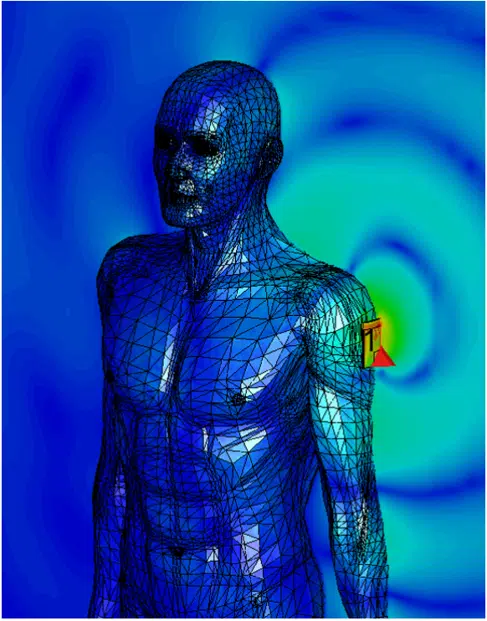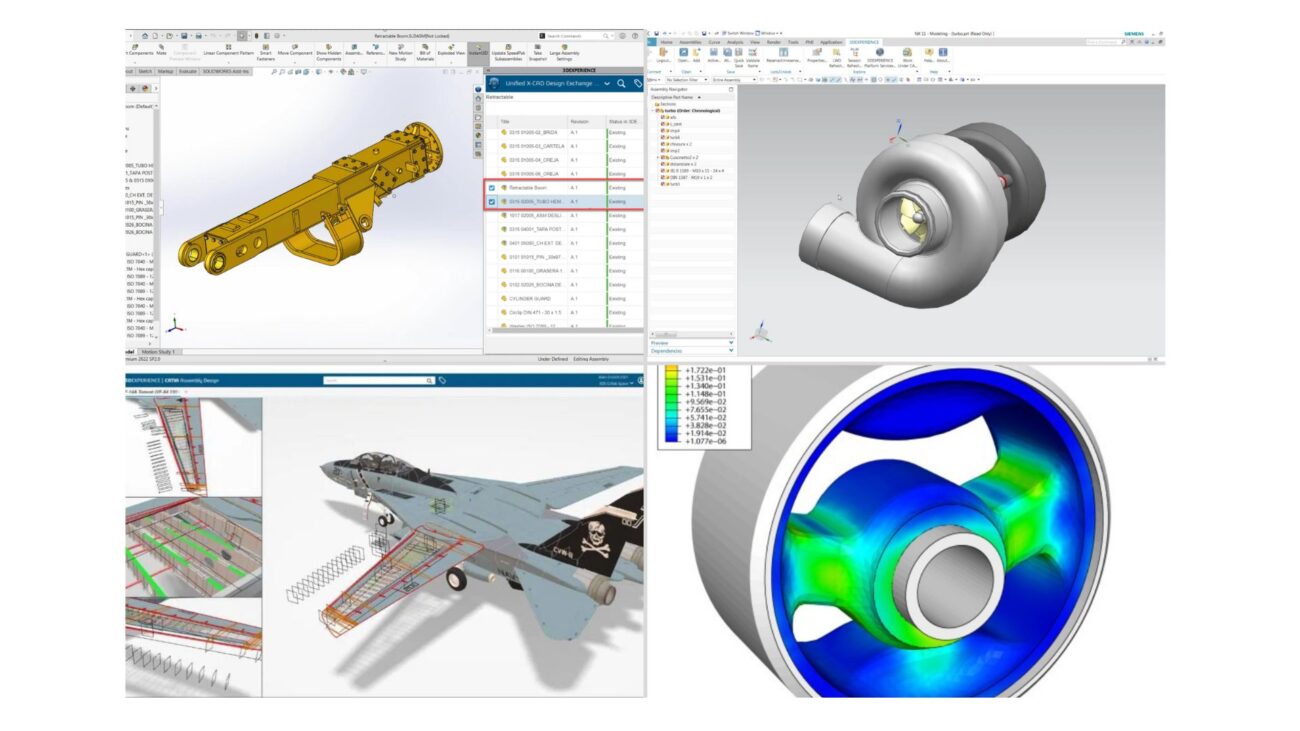The global life sciences industry has been on the rise, growing more rapidly than ever over the past decade. A record $70 billion of private and public capital poured into life sciences-related companies in North America in 2020, a 93% increase from the previous record of $36 billion received in 2018 [1]. This growth has allowed the scientific community to develop less invasive equipment and treatments using electromagnetic radiation. Therefore, it is crucial to understand how these radiations interact with the human body. Since we cannot easily and comfortably measure inside the body, cylindrical or brick-shaped phantoms made of plastic and filled with a fluid that imitates the body tissue properties are used instead. Simulation has become essential not only to avoid costly and time-consuming prototype fabrication and testing, but also to ensure patient safety from medical devices.
Human body representation for electromagnetic analysis
One aspect of great importance in electromagnetic field analysis is the definition and representation of the materials of the different tissues in the human body. There are several variants for the definition of the materials. Usually, cylindrical or brick-shaped phantoms that are made of plastic and filled with a fluid that imitates the body tissue properties are used in measurement. This is not very realistic and does not guarantee accurate results. Therefore, the use of electromagnetic analysis through simulations is practically mandatory in procuring more accurate results.
Models available for biomedical simulations
Depending on the frequency band to which the models are exposed to, the electromagnetic field can penetrate the human body and affect inner organ tissues. Therefore, a more accurate and more detailed representation of the interior of the human body is necessary.

Figure 1: Models and data sets available for biomedical simulations in CST Studio Suite.
This is the case where other variants such as surface bio models and voxel models are available. Out of these variants, best option is voxel models which are made of elements like 3D pixels or cubes with a certain resolution, or CAD-based models, such as CATIA or SOLIDWORKS with solids for each organ.The CST Voxel Family is a group of eight human model voxel data sets created from eight persons of different gender, age, and stature. Some are based on CT and MRI scans of actual persons and are available at various resolutions. Others are based on the US National Library of Medicine’s Visible Human Project®, for which a frozen corpse was dissected and photographed. Additionally, we have different models such as homogeneous poses (Driver, Walking, Phone Right, Arms Down, Arms Front, Body Scanner), CST animals models (a monkey, a goat, and a rat), the Specific Anthropomorphic Mannequin (SAM) head phantom and CATIA hand models.

Figure 2: Voxel Model definition for a Living Heart in CST Studio Suite.
Material definitions
In addition to the geometric definition, we need to use the material properties which are accurate and validated. CST Studio Suite material library contains many different human tissue properties with electromagnetic, thermal, and mechanical properties. These include frequency-dependent electromagnetic properties with the ability to perform Cole-Cole model fitting [2][3], for either broadband or for specific frequencies. Not only does this library include electromagentic properties but temperature-dependent properties like electrical conductivity or blood perfusion co-efficient for Bioheat calculation.
Once we have the model of the human body accurately represented with a good definition of the electrical properties of the tissues, we can perform an analysis and visualization of the electromagnetic fields in a more accurate manner inside the human body. This is important to note because this is a test that cannot be done in practice without inflicting some damage to the human body.
In VIAS3D we have a reliable technical team with solid technical knowledge to help you with the electromagnetic analysis you need to develop.If you would like to know more about the human models that we have, do not hesitate to contact us.
About VIAS3D
VIAS3D engineering and simulation team combines decades of analytical and design experience. We have successfully helped to design various products from many industries for strength, stability, rigidity, and fatigue endurance. Our design and analysis capabilities are accomplished through advanced engineering modeling techniques such as Finite Element Analysis (FEA) using Abaqus, Computational Fluid Dynamics (CFD), and other tools.
Using these advanced tools, we can capture complex design features and nonlinearities arising from materials, geometry, and surface interactions to simulate designs and predict their response before they are brought in production.
To learn more about our technical capabilities in transportation and mobility industry, please visit our website https://vias3d.com/services/industry/life-sciences/
References:
[1] Life Sciences on the Rise: 2021 North American Report (cld.bz) [2] Material properties extracted from IFAC NCR, Italy database. http://niremf.ifac.cnr.it/docs/DIELECTRIC/AppendixC.html [3]Body Tissue Dielectric Parameters on the Federal Communications Commission (FCC). https://www.fcc.gov/general/body-tissue-dielectric-parameters.




